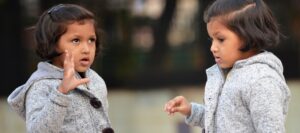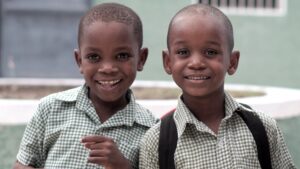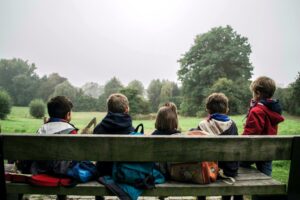Making friends and learning how to maintain social relationships can be challenging for anyone growing up. But for those with autism spectrum disorder (ASD), building new and meaningful relationships can seem especially scary.
In an article titled Social Networks and Friendships at School: Comparing Children With and Without ASD, Connie Kasari et al. collected self, peer, and teacher reports to study the social relationships of 60 high-functioning children with ASD.
The group found that “Children with ASD were more often on the periphery of their social networks, reported poorer quality friendships, and had fewer reciprocal friendships.”
Their study found that 20% of children with ASD in the sample had a reciprocated friendship. A study by Ya-Chih Chang et al. targeting pre-school-aged children resulted in similar data, showing that 20% of participants with ASD in their overall sample had friendships.
Despite these stats, children with autism should not give up on making friends!
Quality friendships can help children who feel isolated build a strong support network and gain confidence. And although making friends can be challenging for everyone, finding knowledge from your community, peers, and autism resources can go a long way.
Read on to find out five tips to help your child with autism spectrum disorder make friends. Have an official autism diagnosis for your child and looking for treatment? Click here to fill out an autism therapy assessment.
Tip 1: Learning How to Further Manage Social Anxiety

Researchers like Gilliott, et al. in their article Anxiety in Children With Autism wanted to find out if children with autism spectrum disorder felt more anxious socially compared to those not diagnosed with autism.
They discovered that “children with autism were found to have considerably higher levels of anxiety than both the SLI and normally developing groups.”
Scott Bellini, Ph.D. and the Director of the Social Skills Research Clinic, delved into this further in The Development of Social Anxiety in Adolescents With Autism Spectrum Disorders when he states that “A child with a temperament that is marked with high physiological arousal would be more vulnerable to developing social fears and worries following negative peer encounters… This is particularly important for adolescents with ASD.”
Children with autism may often worry about what to say in social situations or how their words may be perceived by others. Bellini notes that social skill training could be a viable strategy for reducing social anxiety in children and adolescents with ASD.
An example of social skill training could be for a child with autism to join a Social Skills Group (SSG). SSGs let children with autism practice skills with a dedicated ABA therapist and a group of peers in a low-stress environment.
Click here to learn more about Social Skills Groups at Applied ABC.
Tip 2: Mastering Social Skills

Making and keeping friends means mastering several social skills. Some of these skills may include:
-
Initiating a conversation
-
Understanding nonverbal behavior
-
Taking turns in conversation
-
Learning that not all language needs to be taken literally
One of the ways that children with autism spectrum disorder can learn and practice social skills is through Discrete Trial Training (DTT). Discrete Trial Training is a teaching technique that breaks down an action into small, bite-sized pieces. DTT uses positive reinforcement as a means of incentivizing the desired behaviors.
Over time, a child will gain confidence in these learned skills and be able to apply them while forming and building current friendships with others.
To learn more about what DTT is and how it could benefit your child read this blog.
Tip 3: Getting Involved in Activities and Hobbies

Having a shared interest is a great way for people to come together and form quality friendships. Often though, discovering what those hobbies are and getting started may be challenging.
A study by Amir Hossein Memari et al. studying patterns of participation in daily physical and play activities for children with ASD found that these “children were predominantly engaged in solitary play rather than social play activities.”
A big chunk of ABA therapy is learning through play and activity. One therapeutic technique called Natural Environment Training (NET) can help children with ASD practice learned skills or activities in an elastic environment and across multiple settings.
For example, although a child with autism may have mastered kicking a soccer ball in a controlled setting at a field by the child’s house, a therapist may try other fields or placing the net on a different side of the field. Once the child has gained enough confidence in their abilities, they should be able to adapt based on the nuance of a situation.
Social Skills Groups bring other children together and could even lead some children with autism to discover hobbies and interests. Regardless, if a child receives in-center or at-home ABA treatment at Applied ABC, children often get the chance to visit sensory-friendly places and events.
Tip 4: Using Resources to Maximize Engagement
From pre-planned after-school activities to an organized astronomy group, taking advantage of community resources in your local area is a great way for children with autism to connect with one another over shared interests.
There are also many resources out there to learn more about autism spectrum disorder, learning social skills, and the benefits of ABA therapy.
Tip 5: Celebrating Quality Over Quantity

It’s okay if a child isn’t juggling multiple low-quality friendships at once. If a child with autism does have one or two quality friends, then that should be encouraged.
It’s also a great idea to set up playdates between friends so that the children can help foster a deeper relationship. Planning activities in advance is a great way to optimize the time children spend together.
To learn more about these and other strategies for helping your child excel, contact our team and get the ABA therapy process started today!
Sources Cited
Bellini, Scott. The Development of Social Anxiety in Adolescents With Autism Spectrum Disorders
Chang, Yi-Chih, et al. Friendships in preschool children with autism spectrum disorder: What holds them back, child characteristics or teacher behavior?
Gillot, Alinda, et al. Anxiety in High-Functioning Children with Autism
Kasari, Connie, et al. Social Networks and Friendships at School: Comparing Children With and Without ASD
Memari, Amir, et al. Children with Autism Spectrum Disorder and Patterns of Participation in Daily Physical and Play Activities




